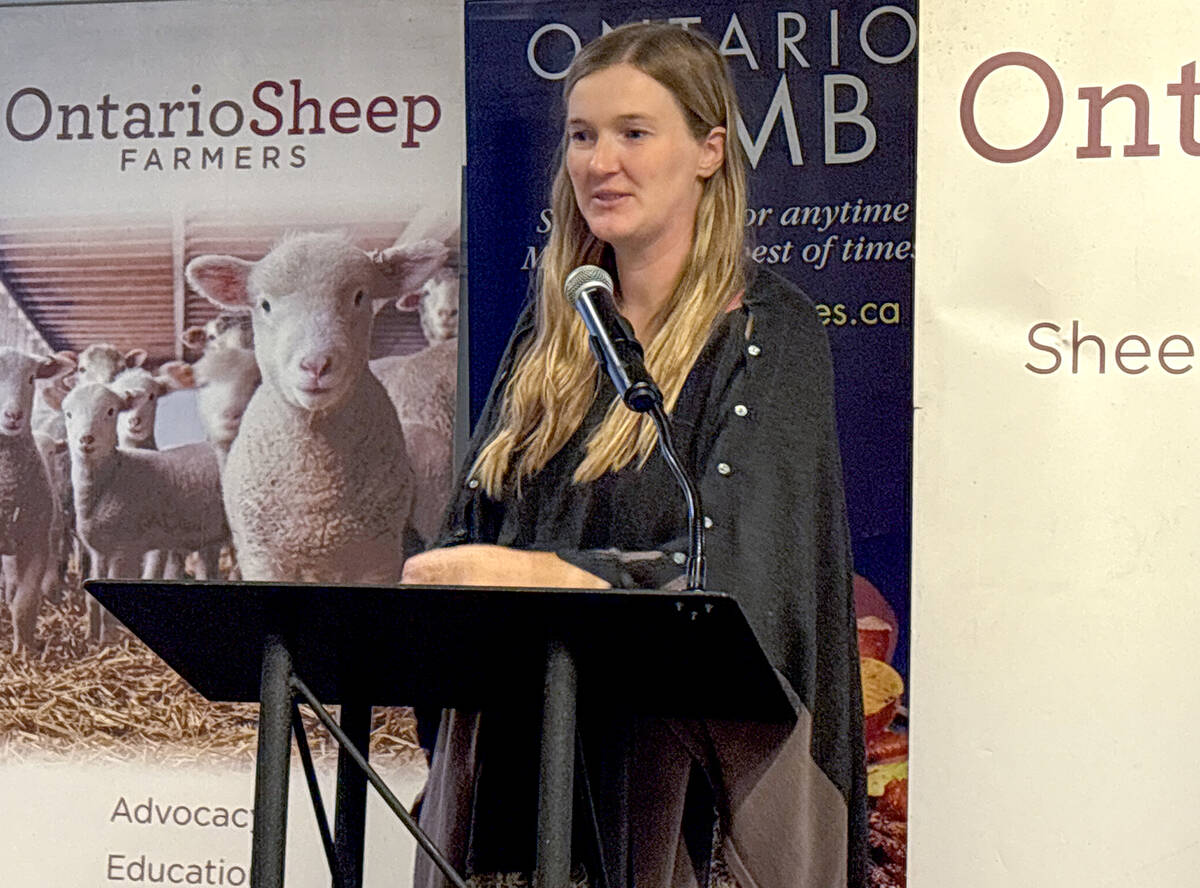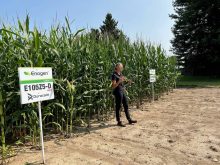Covering bunk silos has become common practice for livestock farmers, but results in a significant amount of plastic being sent to landfills.
SiloStop, a 3.2 mil thick forage protection layer was recently brought to Canada. It only requires one layer and is an oxygen and ultraviolet light barrier.
Why it matters: Feed bunks hold important potential production for farmers, so maintaining feed quality has significant financial implications.
Wayne Kneisel, technical consultant with ING Nutrition Inc., sells the product from New Hamburg, Ont.
Read Also

Footflats Farm recognized with Ontario Sheep Farmers’ DLF Pasture Award
Gayla Bonham-Carter and Scott Bade, of Footflats Farm, win the Ontario Sheep Farmers’ 2025 DLF Ontario Pasture Award for their pasture management and strategies to maximize production per acre.
SiloStop Max is a nylon-based resin, says Kneisel, and is a combination product with bulk C resin.
Kneisel says the product lowers a farmer’s environmental footprint with its 3.2 mil thickness as many producers today are using 6.5 to 10.5-mil-thick plastic products for their silage protection.
“(Plastic) is getting a lot harder to dispose of. There is probably going to be a tax dollar down the line on all plastics.”
Aside from the lowered thickness in plastic, the product also contains a better oxygen transmission rate (OTR).
A base resin is put on between the layers of polyethylene. It allows for minimal OTR.
“We have a product that allows less than five cubic metres (of oxygen) through the product over a 24 hour period with forced air.”
Trial work at the University of Michigan shows that the closest of competitor is 300 cu. metres over a 24 hour period.
“The bottom line is we get less dry matter loss in storage.”
Paul Mitchell, dairy farmer near Mitchell, Ont., uses SiloStop Max.
Mitchell says that using just one layer of protection for his corn silage has made it easier to cover the bunk silos. As well, he says his forage quality has increased.
“When you peel the plastic back, the (forage) looks the same as when you put it in.”
Although the product is new to Canada, it’s been used in Europe for the past five years and has been used in the United States for two years.
Currently, it’s only available for use in bunk silos but there is nothing like it on the market, says Kneisel.
“There is no one else that has anything that is that thin, that durable and able to provide the forage protection against air and UV rays.”















